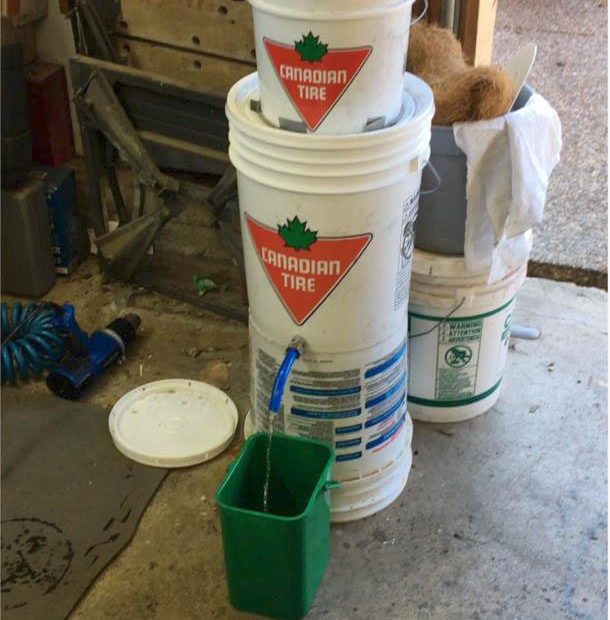When we got the boat, the first order of operation was to clean the bilge, which was a filthy, mucky, oily primordial ooze that hadn’t been cleaned in eons.
We tried using vinegar, but that didn’t really work. Then we used laundry detergent, and that worked a bit better. Finally, we used a product called Oil Lift which worked very well. We scrubbed and scrubbed, then rinsed with fresh water and then pumped or vacuumed the bilgey water out.
But what to do with the dirty water? I couldn’t just dump it. So I made a bilge-water filter based on a biofilter design.
The top bucket contains layers of fabric, coconut fibres, crushed charcoal, fine river sand, pebbles, more fine sand, more pebbles and a cloth that absorbs oil on the top.
I drilled holes in the top bucket, making it into a colander. The bilge water is poured over the filter matrix, drips down and through it and into the bottom bucket, through the spigot and into another bucket.
My thinking is that larger particles will get caught in the matrix of the filter, and then I can flush the filtered liquid down the toilet where it will be processed in the city’s sanitation facility. Eventually, I’ll have to dispose of the filter matrix, and the only way to do that will be to send it to the landfill.
I asked around to see if there was a company that would take and process the bilge water, but they only do industrial scale, not such small amounts. So this was my solution.
It’s not perfect at all, but this is my attempt at dealing with the problem in a more environmental manner.
And because this boat has a gas powered engine, we’re hoping to convert her to an electric motor next year. We have to do lots of research first, and save up for it as well.
But first, to get her nice and water tight and in the water this summer.
